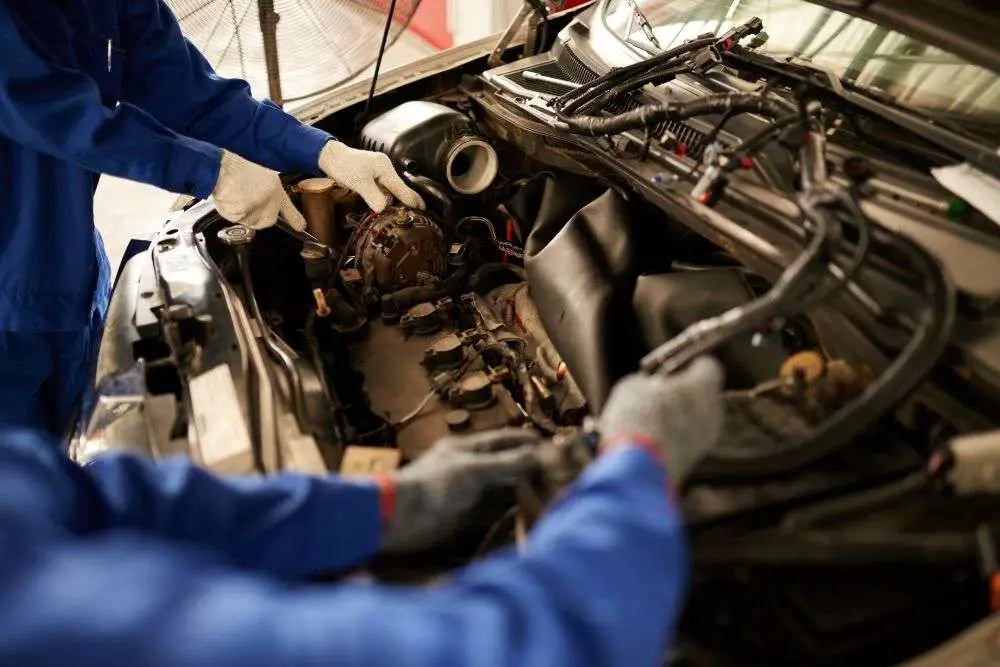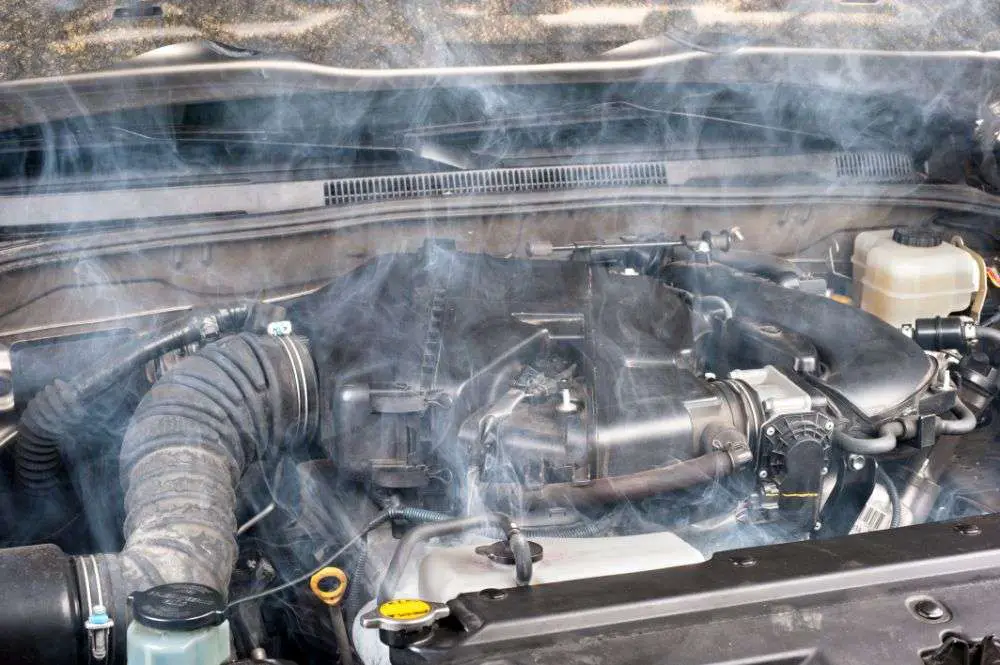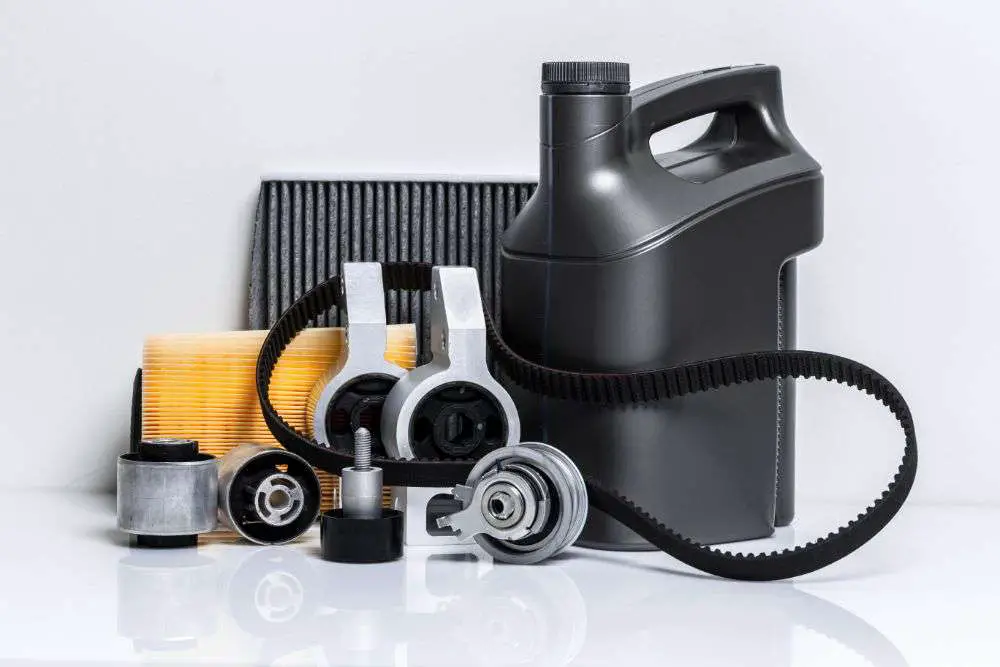When should you replace your timing belt and how long is it supposed to last? That question, along with how often transmission fluid should be changed, are common questions for people to ask all the time. The truth of the matter is, it depends on how well you take care of your car and what kind of miles you put on it.
For instance, if you like to drive aggressively and put lots of wear and tear on your vehicle then chances are your timing belt will need to be replaced sooner than someone who drives more conservatively.
In this blog post, we’ll go over when exactly you can expect to replace your timing belt so that you know when it’s the time!
Why is replace your timing belt important?
A timing belt is a rubber band-like belt that goes over the crankshaft and camshaft in your car’s engine. The timing belt controls when each of these components can move, making sure they open and close at the right time during the process of combustion.
When this timing is off it causes all sorts of problems such as timing belt failure. To put it simply, timing belts wear down over time and need to be replaced in order to keep your vehicle running smoothly!

There are a couple of reasons timing belt replacement is needed. The first reason is because of the rubber material they’re made out of which tends to wear down or dry up over time causing damage and dysfunction in your engine!
Another reason timing belts break is the fact that engines heat up during use, making timing belt materials more likely to break.
If you don’t replace your timing belt at the regularly you risk causing major damage to your engine which can cost a ton of money!
The last reason timing belt change is needed is that they’re integral in making sure that other parts within your car are working correctly, so if one part malfunctions due to timing belt failure it’s likely others will follow suit.
What are the benefits of replacing my timing belt?
There are so many benefits to getting your timing belt changed! For starters, you’ll be able to enjoy peace of mind knowing that your engine is safe and won’t fail at any given moment. Timing belts can cause major damage if they malfunction or break on their own without warning, which means timing belt failure could put you in a dangerous situation while you’re on the road.
Replacing your timing belt can also help avoid more costly repairs such as timing belt replacement cost and engine failure which could add up to thousands of dollars in repair bills!
Learn to know when your car needs a new timing belt
One of the best ways to tell that timing belt replacement is necessary is by listening for any unusual sounds coming from your engine. If you hear loud clicking, clunking or squeaking it could be an indicator that timing belt replacement is required!
The second way to know if timing belts need replacing is through regular maintenance checks with a professional mechanic. When timing belts need replacing they often make a loud squealing noise, so by simply driving your car for a few minutes, you’ll usually be able to tell if timing belt replacement is necessary.
The steps for replacing the timing belt on your car
Replacing your timing belt is a job that should only be done by trained, experienced mechanics. If you try to replace your timing belt without any experience or training it could lead to serious injury!
The following are the steps for replacing a timing belt:
- Drain the engine oil and remove all hoses leading into the timing cover.
- Remove timing cover and timing belt.
- Replace timing belt and reassemble engine components in reverse order of steps taken to remove them.
Timing belt should be changed by trained mechanics as it can cause serious injury if not performed properly! For this reason, we recommend taking your car into the shop for timing belt replacement so that it’s done by a professional!

The cost to replace your timing belt
The cost of getting your timing belt changed depends on the make and model of your car as well as how much labour will need to be done. Generally, the cost is around $400-$1000. There’s also a good chance that you’ll have some additional fees such as timing belt installation costs or parts needed for timing belt replacement!
Luckily, replacing timing belts just means investing in something that will get you back on the road with peace of mind!
You can easily purchase timing belts at your local auto parts store or even better – buy timing belt replacement kits which often come with all the necessary timing belt components that you’ll need to replace them. It’s generally a very straightforward project that can be done quickly and easily – it’s much easier than you might think!
How long should you wait before you replace your timing belt?
It is important to replace your timing belt once it shows any signs of wear.
When your timing belts need to be replaced, you’ll know because there is an increase in the number or frequency of times your engine has to go in for repairs for water leaks, valve and head gasket pitting.
It can also reveal related problems such as broken oil pan bolts that can cause significant damage if not dealt with right away!
Once issues with these parts have been discovered then it’s definitely time to get yourself a new set.
Even if you don’t have any issues with these parts yet, a regular timing belt change is still recommended. It’s just a good idea to get them changed out before they do become an issue and cause more costly damage later on down the line.

Can a bad timing belt cause a car to overheat?
A timing belt is a toothed belt that synchronizes the rotation of your engine’s crankshaft with the pistons’ motion. If this timing belt fails, it might destroy either or both components, resulting in overheating and even fire.
If your timing belt broke while you were driving, the engine may be overheating as a consequence. Because the timing belt links your water pump to your engine without distributing coolant throughout the system, this is the case.
It’s not great timing but it could be worse! Here are some tips for what to do next:
1. Call for help
If you have cell phone service or another driver in the area who can call for help, notify them so they can send someone out as soon as possible. If none of these choices are available, stay in your car and try to wait for someone to come.
2. Assess the damage
Check your engine for a smoke after waiting for help. If it’s still smoking, check your engine while you wait. Turn off the car as swiftly as possible to avoid additional damage or a fire.
3. Get out of the car
Once you have turned off the engine and opened your hood, it is safe to step out of your vehicle and begin flagging down help.
4. Stay safe
There may still be hot parts in the area that can cause severe burns, so keep away from them as much as possible. Maintain a safe distance from the engine at all times.
5. How long should you wait?
It depends on how serious the damage is, but if you think it’s safe to leave your car after cooling off, move on to step six.
6. What can you do next?
If you don’t have a repair shop near you, call a tow truck or another automobile to come to pick you up because timing belt damage generally indicates the presence of a leak in the system, which may lead to additional concerns.
Don’t drive your car again until you have had the timing belt replacement completed by a certified mechanic.
Conclusion
Your vehicle’s timing belt is the most vital and costly mechanical part. If the engine dies, it might be necessary to replace it, as its lifespan is unpredictable.
Replacing your timing belt can cost $300-$800 depending on the type of car you own and any other repairs that would be needed at the same time such as water pump replacement or transmission repair.

